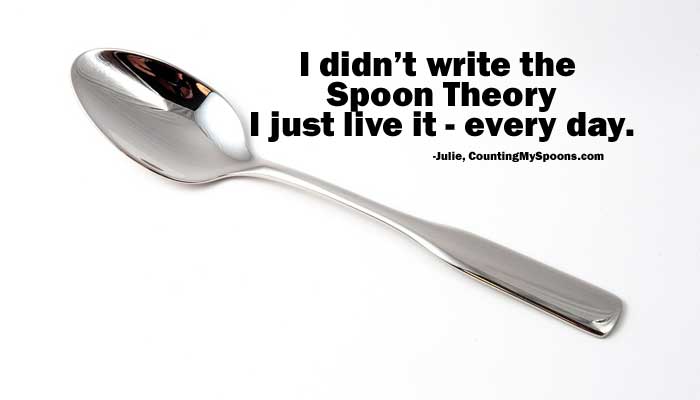This article is intended to help “Non-Spoonies” understand the Spoon Theory
For the millions of people in the world living with chronic illness, it can be difficult to explain your condition to others. When people can’t see visible evidence of illness they may doubt your pain and experience. This is the everyday frustration of a chronic illness sufferer: not being understood.
For Christine Miserandino, it was her best friend not understanding her experience having lupus that drove her to come up with the explanation used by chronic illness warriors around the world: the spoon theory. Please take the time to read Christine Miserandino’s personal story and analogy of what it is like to live with sickness or disability. – See more at: ButYouDontLookSick.com
Using spoons as a metaphor for energy, she explained that each activity she completes in a day “costs” a certain amount of spoons. Once she runs out of spoons, she has no more energy left for that day.
As the theory goes, a typical “healthy” person has a high or unlimited amount of spoons and doesn’t have to worry about running out. However, those with chronic illness must pace themselves and plan their day according to the amount of spoons they hold.
Chronic illness sufferers across the globe are now using Christine’s theory to help others better understand what they’re going through.
The spoon theory has resonated with so many that there is now a following of people with chronic illness who refer to themselves as “Spoonies,” who connect with each other and share experiences through social media.
Read on to learn more about the spoon theory and how to join the conversation.




